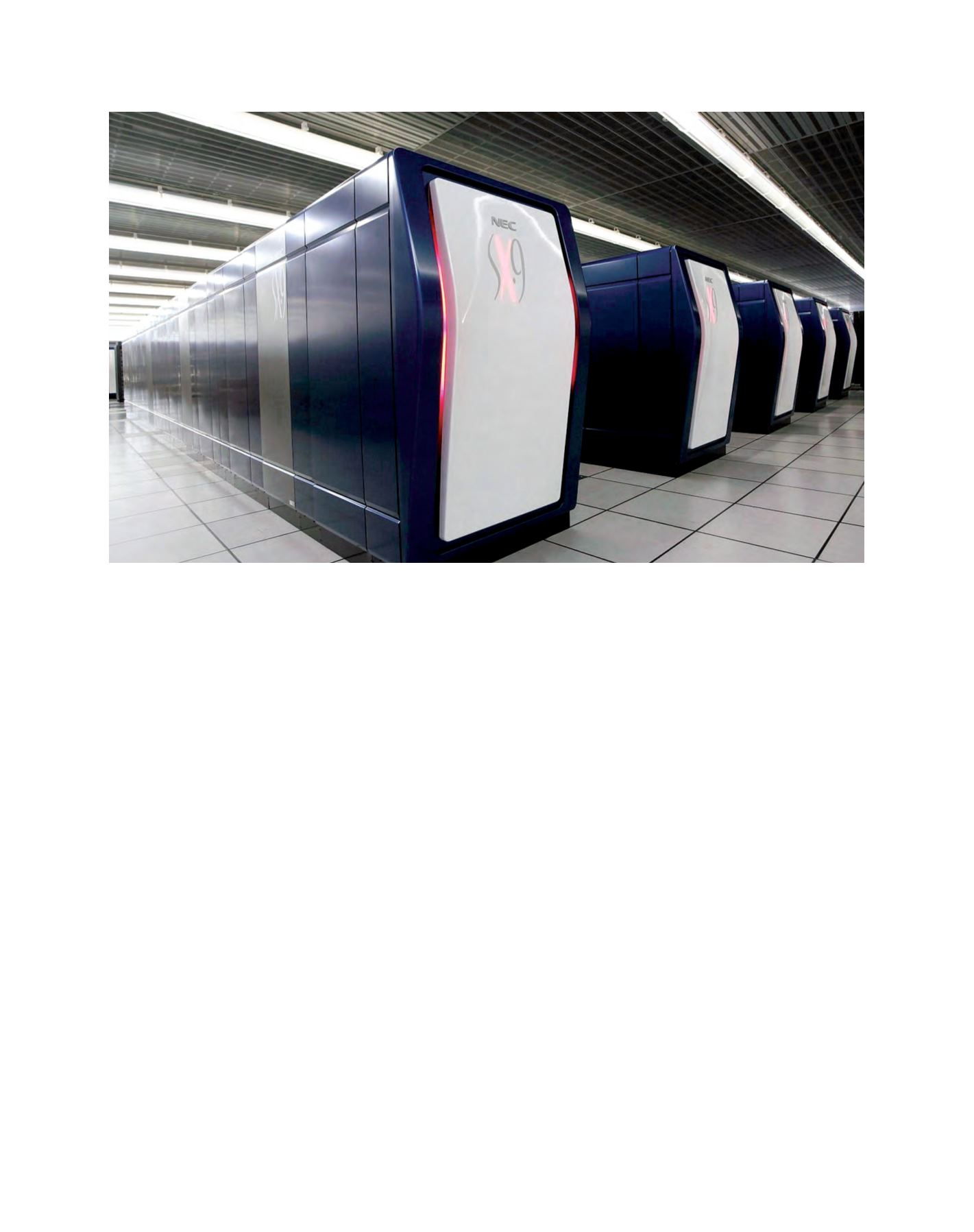

[
] 145
O
bserving
, P
redicting
and
P
rojecting
C
limate
C
onditions
are associated with higher temperature. The 120ppm elevation of CO
2
corresponds approximately to 1ºC. This is clearly significant for global
warming projection where a typical range of temperature rise is 2-4ºC.
Namely, there is a feedback loop between climate and carbon cycle, in
which warming raises CO
2
concentration and vice versa, meaning that
the feedback is positive.
One of the difficulties in developing ESMs exists in the short-
ages of available data to verify them. Interactive processes between
climate and carbon cycles in ESMs need to be verified against obser-
vations as soon as possible. A recent preliminary experiment with
a new version of MIROC-ESM – where a spatially explicit and
individual based dynamical global vegetation model is included –
shows a possibility of considerably reduced feedback compared to
the previous C4MIP case (under the same anthropogenic CO
2
emis-
sion scenario A2) through growth of new types of vegetation under
changing climate. Uncertainty in the intensity of climate-carbon
cycle feedback will be one of the central themes for the next assess-
ment report of IPCC. Geographical distributions of monthly mean
CO
2
and methane, which will be available from the satellite GOSAT,
are expected to contribute with respect to verifying short-term proc-
esses in the carbon cycle and reducing associated uncertainties.
The climate-carbon cycle feedback has implications for the design
of a long-term mitigation plan against global warming. IPCC AR4 for
Working Group 2 discusses CO
2
stabilization targets and emission
pathways to achieve them, often without considering the feedback. By
appropriately adopting ESMs, it is possible to evaluate its impact on
emission pathways. Such experiments have been indeed performed
by some of the existing GCM-based ESMs. Results from MIROC-ESM
show that the permissible emission to accomplish CO
2
stabilization
is reduced by around 20 per cent when climate and carbon cycle are
allowed to interact. In order to provide a scientific basis
for mitigation planning in the Fifth Assessment Report of
IPCC, due in 2013, international coordination is under-
way to organize experiments for evaluating permissible
emissions with GCM-based ESMs.
Outlook
The concept of ESS has existed for a relatively long time,
but realization of the urgent need for it has only been
appropriately recognized over the last decade. This is
perhaps why scientists are still hesitant to acknowledge
this new field as a discipline. Another reason may be that,
while other new scientific fields have often defined them-
selves by restricting subjects and methods, ESS has in its
nature an inclination toward widening of subjects and
integration of exiting paradigms.
ESS should be regarded as a framework of thought rather
than an established discipline. This interpretation is perhaps
more readily acceptable to most scientists, but raises
another question, as to whether ESS is really a ‘specialty’
worth dedicating a considerable portion of a scientific career
to. However, under the current situation where responding
to global change is a pressing mission for earth science as
a whole, the necessity of a ‘bridge’ is obvious for connect-
ing ever-deepening traditional disciplines. It would be an
invaluable work if earth-system scientists could create and
develop a common mindset that commands a bird’s-eye
view of relevant fields of earth science and possibly social
science. Modelling will continue to contribute to a coopera-
tive growth of diversifying disciplines and expanding ESS.
Theoretical performance of the new Earth Simulator, upgraded in April 2009, is three times as high as that of the former
Image: JAMSTEC
















